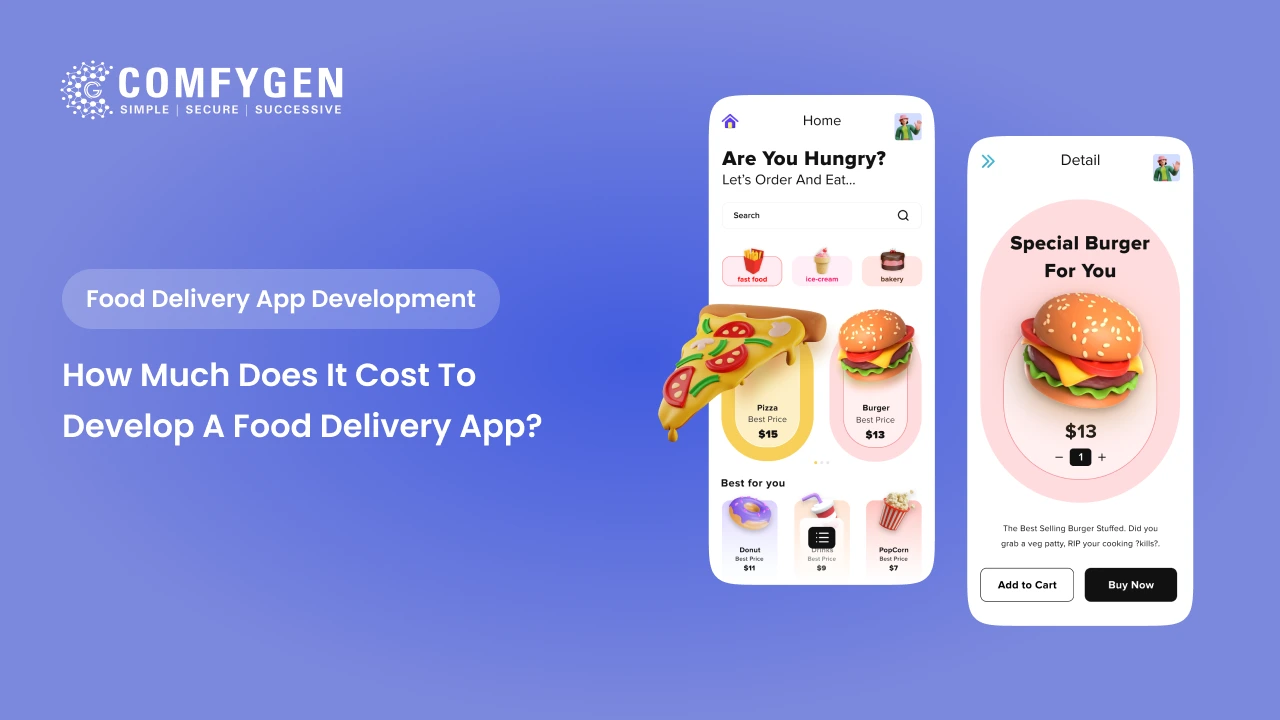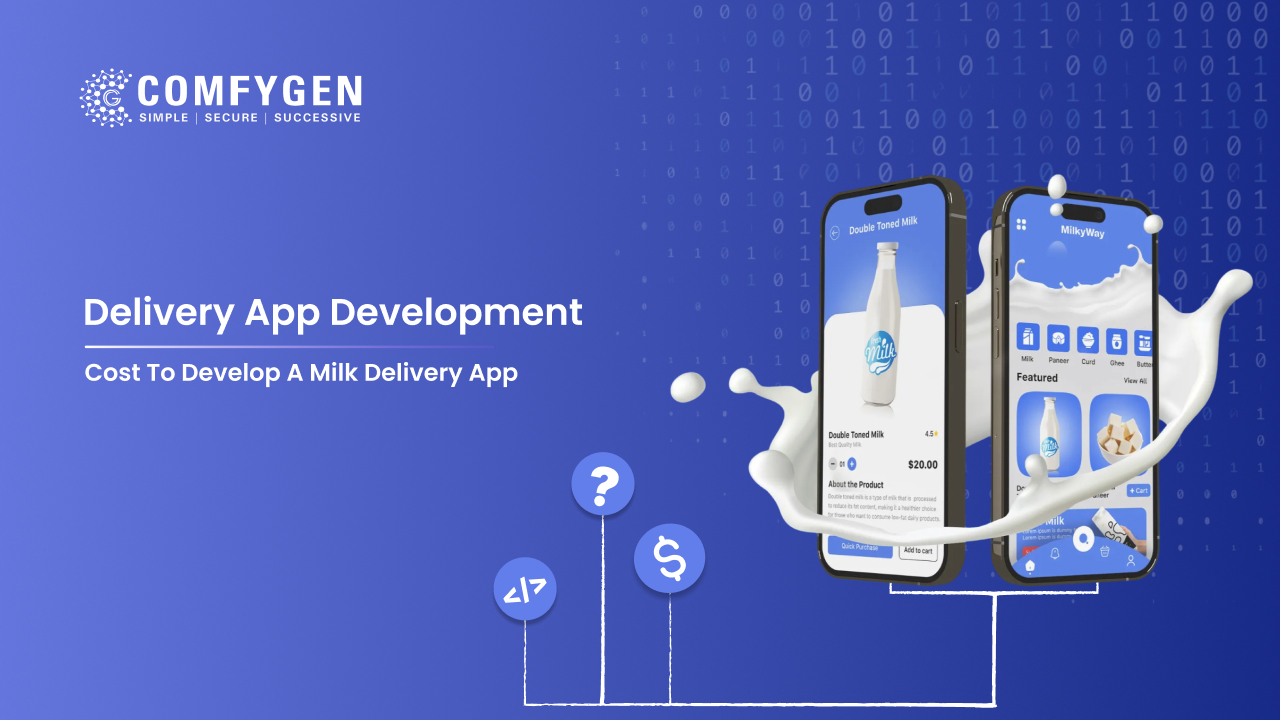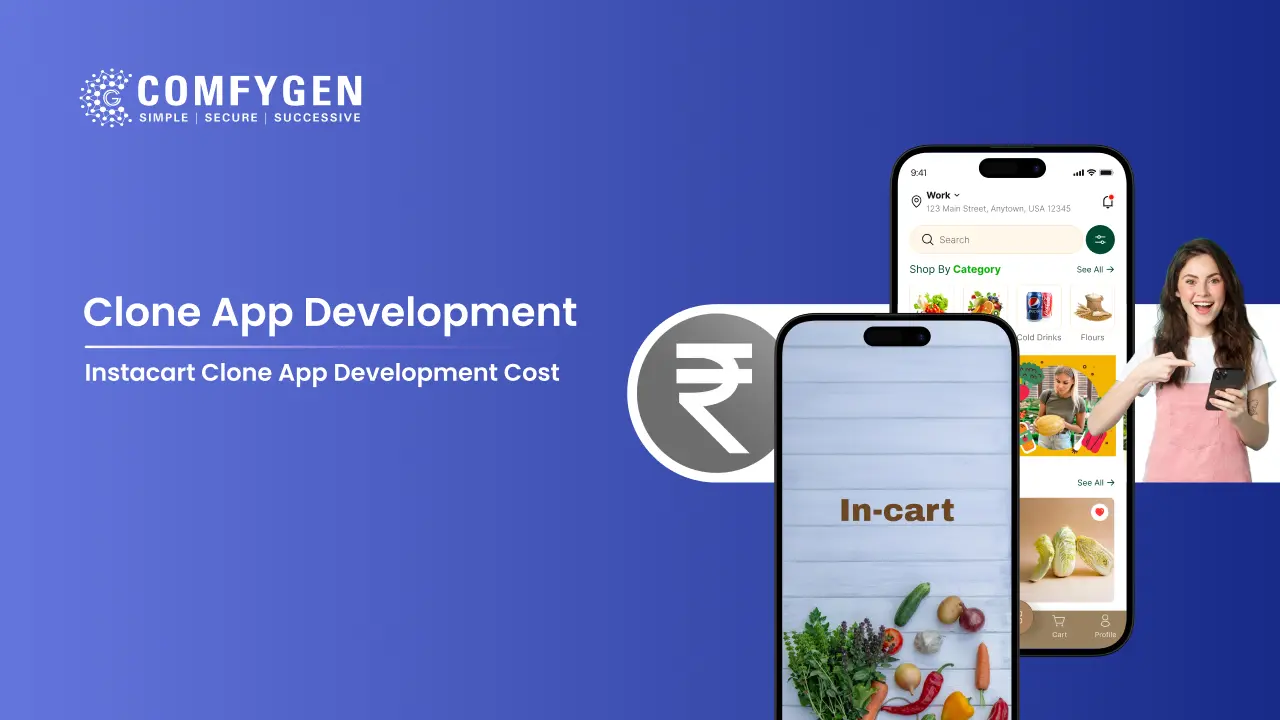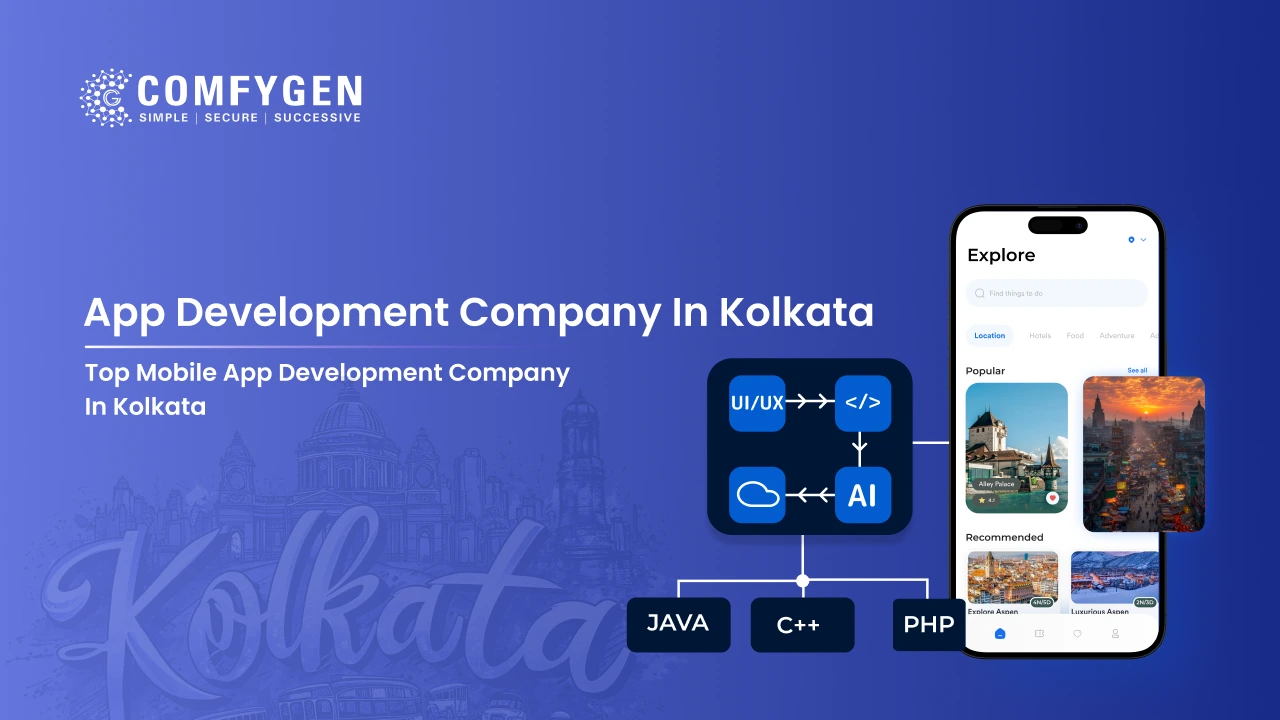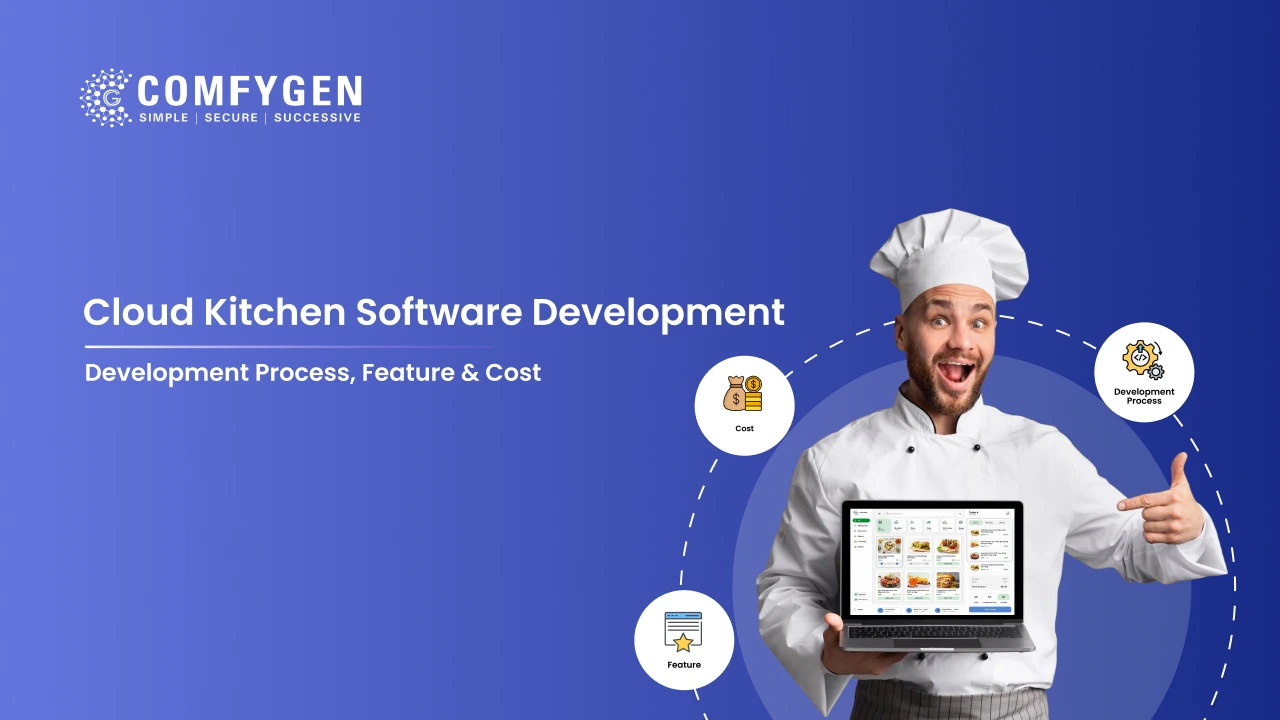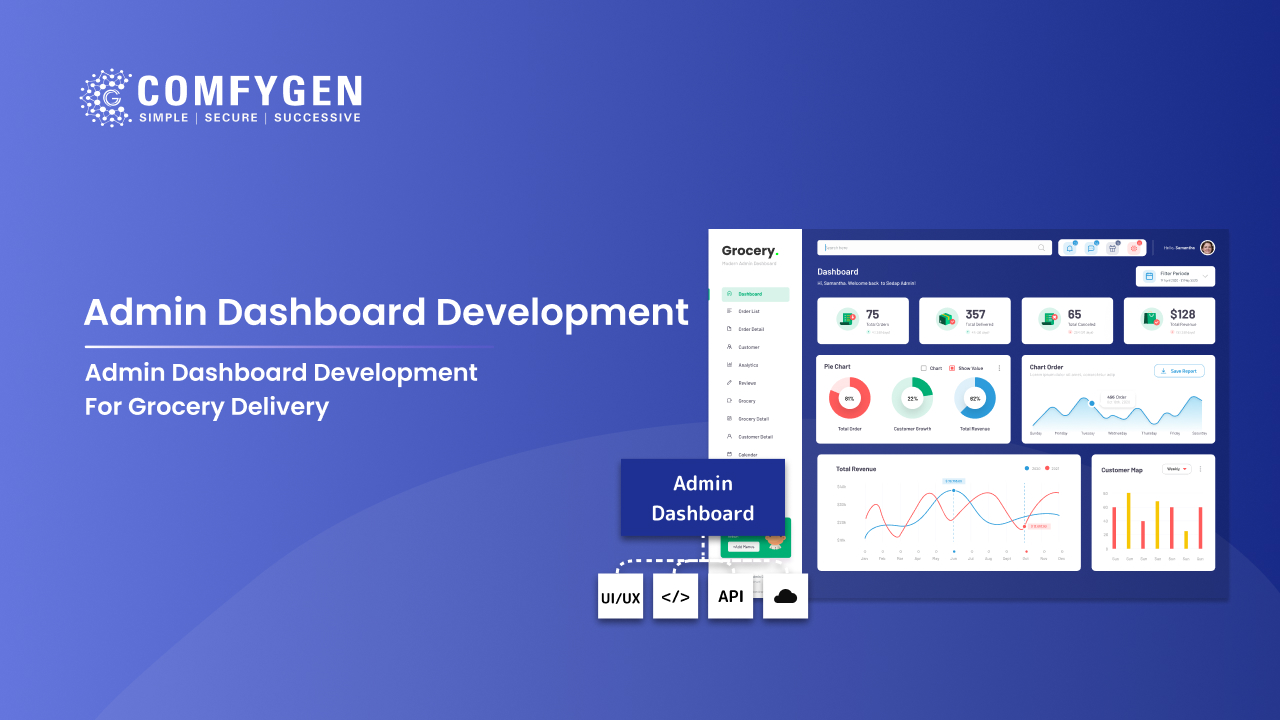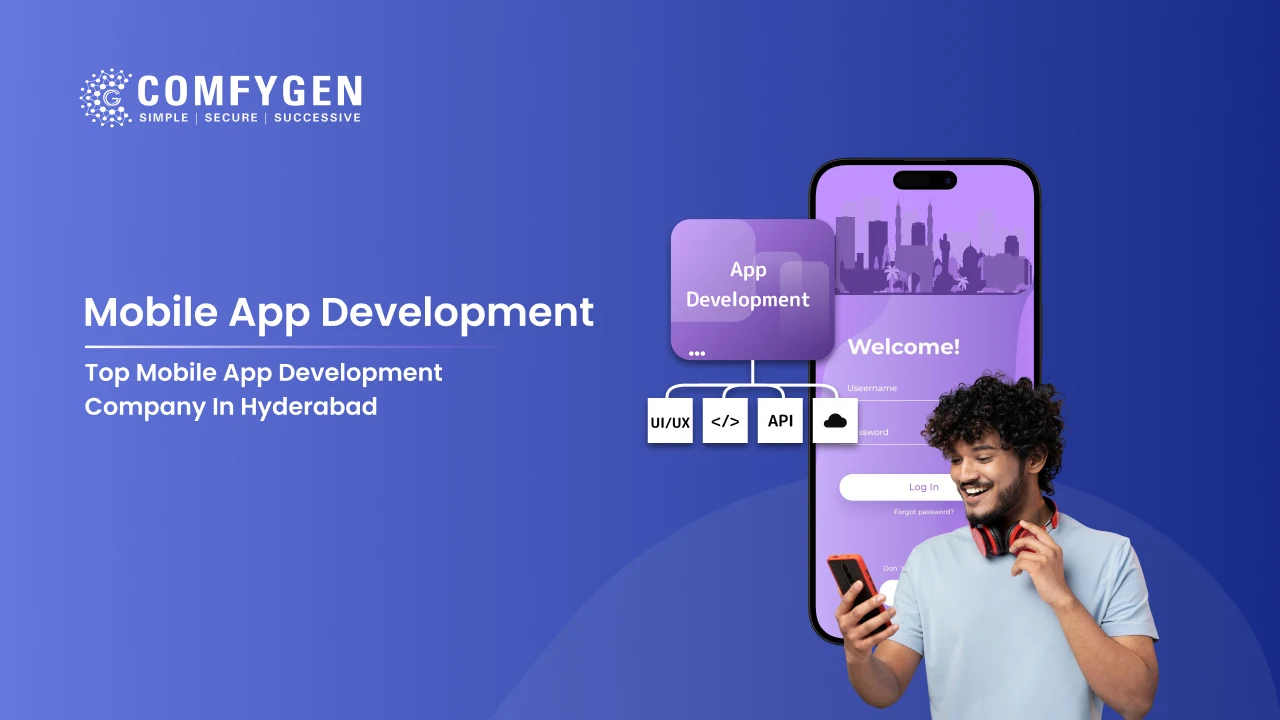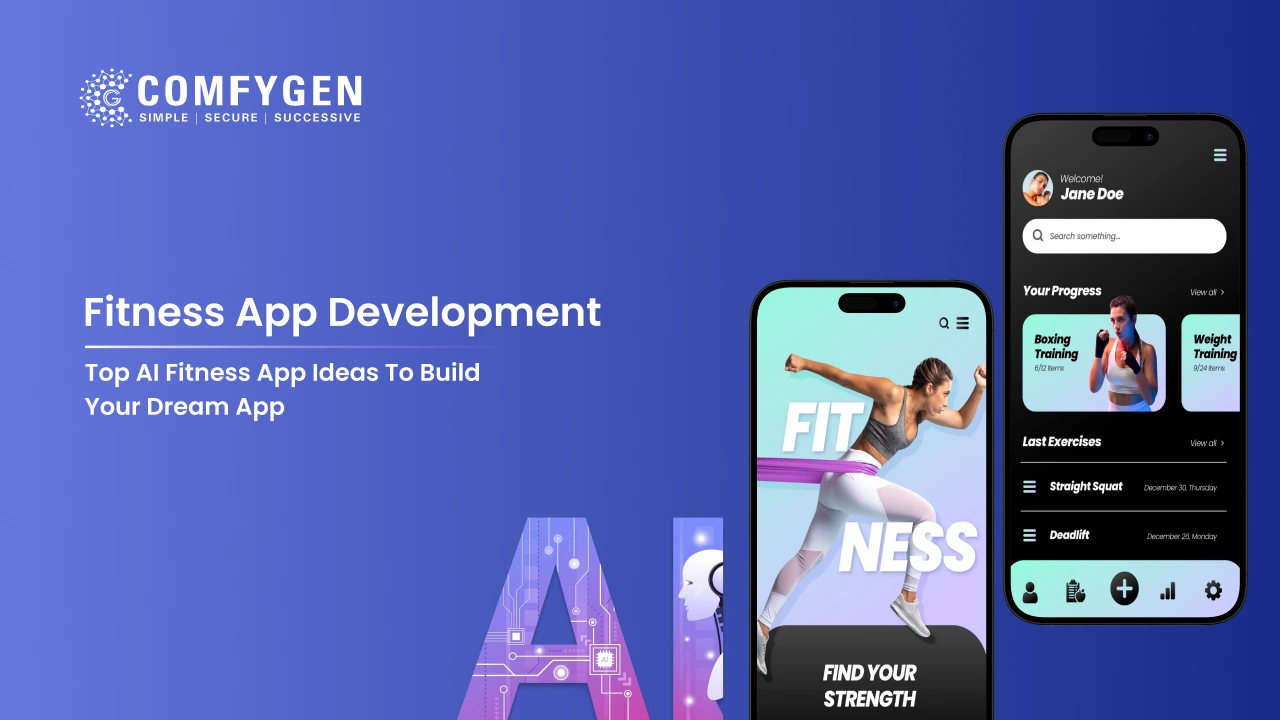How Much Does It Cost to Develop a Food Delivery App?
Your restaurant business might be running pretty decently, but what about expanding it?
With the digital evolution, taking your business online through mobile applications or websites is better. To start an online food delivery business from scratch, you will need a unique idea that is competitive and compatible with market standards, a handsome investment, the best food delivery app development company, and the motivation to make it happen.
Businesses looking to venture into the food delivery industry must read our blog. Here, we will discuss developing an on-demand food delivery app, development cost, business model, revenue model, and some necessary guidance & instruction. Also, we will be telling you the factors affecting food delivery mobile app development cost, tips to reduce cost, and other considerations when embarking on the on-demand food delivery app development journey.
Without any delay, let’s get straight to the point of discussion.
What is the Average Food Delivery App Development Cost?
The average cost to develop an on-demand food delivery app ranges between $40000-$300000. This is an estimation, but there are many other factors that will affect the cost, such as the complexity of the app, features, functions, custom UI/UX, trending technologies integrated, tech stacks, and more.
If you build an online food delivery mobile application with complexity, an extensive feature list and custom UI/UX, the cost will increase. Given you a short table of the development cost based on the app’s complexity:
| Complexity | Cost ($) |
| Basic App | $40000-$60000 |
| Moderate Complex App | $60000-$150000 |
| End-to-End Complex App | $150000-$300000 |
Factors Affecting the Online Food Delivery App Development Cost
Multiple factors are combining to enable building an efficient & custom on-demand food delivery application. With a deep understanding of every factor, listed are some that impact the overall cost of app development:
UI/UX Designs
Invest in intuitive and interactive UI/UX designs because that will bring success to your application. It’s imperative to design the application with a detailed interface, such as smooth navigation, appealing designs, interactive features, engaging visuals, and more – and investing in these will impact the overall food delivery application development cost but ensure increased customer satisfaction & retention rates.
App Platform
Choosing a dedicated app deployment platform, such as Android, iOS, or cross-platform, will affect the total cost of food delivery app development. Every application with its plan of marketing the product has custom development requirements, and the choice of deployment platform will fluctuate the cost.
Features & Functionalities
On-demand food delivery app development requires some basic features for the customer’s panel, delivery panel, and administration panel. Besides the basics, adding more customized functionalities and features, such as voiceover commands, smart recommendations, dynamic pricing, chatbot, real-time GPS tracking, etc, will increase the overall development cost of a food delivery app.
Team Size
If 2-3 people are involved in your project, this might cost you less. On the contrary, hiring the best on-demand food delivery app development company will involve project managers, QA & engineers, developers, designers, writers, and others in the project, which directly increases the cost. Hiring a full-fledged team for the project needs more budget considerations.
Location of food delivery app Development Team
The geographical location of developers or the company impacts the cost of best food delivery app development. Different regions cost different too; such as:
| Region | Cost Per Hour ($) |
| UAE | $60-$65 |
| US | $95-$105 |
| Western | $80-$90 |
| Asia | $25-$40 |
| Eastern Europe | $50-$60 |
| Australia | $70-$90 |
When hiring mobile app developers, be cautious about the cost of the region. Make a suitable choice where the cost & quality won’t be compromised but aligned enough to build a successful food delivery application.
App Maintenance
App Maintenance is an ongoing requirement after the development to ensure the app’s performance, security, market response, bug fixes, regular updates, and enhancements – impact the cost.
Third-Party Integration
Integrating third-party applications, such as multiple payment gateways, APIs, geolocation services, or restaurant management systems, can add to the budget. The more third-party integrations you make, the more you have to pay.
Compliance & Security Standards
Ensuring your food delivery app complies with industry regulations and follows robust security standards is essential to protect user data and maintain trust. Implementing data encryption, GDPR compliance, secure payment gateways, and other privacy protocols can increase food delivery app development costs. However, investing in these areas from the beginning helps avoid legal complications and builds long-term user credibility.
Tech-Stacks
The choice of technology stack plays a vital role in determining the food delivery app development cost. Depending on whether you use native tech (like Swift for iOS, Kotlin for Android) or cross-platform frameworks (like Flutter or React Native), the cost will vary. Moreover, backend frameworks, databases, cloud infrastructure, and analytics tools also contribute to the overall expenses. Selecting a scalable and flexible tech stack can help manage long-term costs effectively.
Testing & Quality Assurance
A well-tested app ensures seamless functionality, security, and user satisfaction. The more rigorous your QA process — covering functional, performance, usability, and security testing — the higher the cost. However, thorough testing during each development phase helps identify bugs early, reducing costly fixes later and ensuring a smooth user experience post-launch.
Must-Have Features to Build an Online Food Delivery App
When developing the online food delivery mobile application, we must add features keeping all 3 panels in mind – Customer’s Panel, Delivery Panel, & Restaurant Panel. Given are the features dedicated to each panel:
Customer’s Panel
| Features | Descriptions |
| Restaurant & Food Searches | The users are allowed to search for their favorite restaurant or food items through the search option given. |
| Menu Browsing | The customers can view detailed menus of restaurants with photos, descriptions, and prices. Users can add items into the cart by selecting the item. |
| Real-Time Order Tracking | With the smart GPS tracking, the users can track real-time order progress, estimated delivery time, and location on the map. |
| Multiple Payment Options | Many online payment gateways are integrated, such as e-wallets, debit & credit cards, cash on delivery, or UPIs. |
| Customer Support | 24*7 customer support to answer customers in every query with instant solutions. |
| Reviews & Rating | Customers can give ratings & reviews for their orders placed and services offered to them. |
| Push-Notifications | Push notifications for everything, such as delivery updates, order preparation, delayed orders, discounts, offers, promotions, or any announcements. |
| Multi-lingual Support (Optional) | This feature ensures that customers can use applications in their preferred language. |
| Order Recommendation | The feature monitor’s customer’s history orders and order patterns to recommend them some items at the right time based on preferences. |
Delivery Panel
| Features | Descriptions |
| Order Assignment | Allow delivery partners to manage order deliveries based on proximity and workload. |
| Navigation & Route Optimization | It grants the best routes simpler and faster to the delivery partners with prompt navigation for on-time deliveries. |
| Real-Time Updates | Drivers will receive updates on order details, traffic conditions, and delivery time. |
| Availability Settings | Drivers can set ON/OFF on their availability based on their schedules and preferences. They can go online & offline when needed. |
| Income Tracking | Allow delivery people to access earnings on the dashboard and track their income with completed delivery records. |
| Delivery History | Allow deliveries to check how many deliveries they have completed and the customer’s ratings. |
Restaurant Panel
| Features | Descriptions |
| Partner Registration & Management | Enabling restaurants to create their profile, manage their restaurant through apps, update menus, and set operational hours. |
| Order Management | Enable restaurants to receive and manage the incoming orders; either accept or reject them based on the availability. |
| Rider’s Communication | The restaurants can speak to the riders and manage the orders based on the timings and inquiries. |
| Performance & Insights | Restaurants can get insights into order volume, customer feedback, customer feedback, and performance metrics. It helps them improve their performance based on the market standards. |
| Delivery Fee Management | The restaurants will fix delivery fees based on the time, location, and distance to flexibly manage costs. |
| Payment & Settlement | Restaurants can review and manage payments made through the applications with secured in-app transactions. |
“Features described because every feature implementation will add into the total food delivery app development cost.”
Trending Technologies to Integrate in Online Food Delivery App and Their Costs
Besides all the basic features, there are some trending technologies you can integrate into the new-age online food delivery app. We have listed some with the cost required for each technology:
| Feature | Description | Cost ($) |
| AI & Machine Learning | AI-Powered Food Delivery App: Personalized recommendations, smart search, and demand forecasting using ML algorithms. | $4000-$15000 |
| Real-Time GPS Tracking | Live tracking of orders and delivery personnel, with predictive ETAs and route optimization. | $3000-$8000 |
| Chatbots & Virtual Assistants | Automated responses for customer queries, in-app or via WhatsApp, reducing support load. | $2000-$6000 |
| Voice Ordering | Voice-enabled food ordering through assistants like Alexa, Siri, or Google Assistant. | $5000-$12000 |
| Augmented Reality (AR) | Visualize dishes or restaurants using AR for enhanced user engagement and trust. | $8000-$20000 |
| Blockchain Integration | Use blockchain to enhance order traceability, data security and even accept crypto payments. | $10000-$25000 |
| Predictive Analytics | Behavior-based personalization, reorder prompts, and customer segmentation analytics. | $3000-$10000 |
| Smart Packaging Integration | QR-enabled smart packaging with order info, loyalty rewards, or freshness indicators. | $2000-$6000 |
| Gamification Features | User engagement through challenges, reward points, badges, and daily streaks. | $2000-$7000 |
How to Reduce Food Delivery App Development Costs?
Reducing food delivery app development costs involves strategic planning, efficient resource use, and leveraging existing tools to minimize expenses without compromising quality.
- Use Cross-Platform Frameworks: Opt for frameworks like Flutter or React Native to build a food delivery app for both iOS and Android simultaneously, cutting down on separate development costs and time.
- Leverage Ready-Made Templates: Utilize pre-built app templates or UI kits tailored for food delivery apps. These reduce design and coding efforts while ensuring a professional look.
- Outsource to Cost-Effective Regions: Hire developers from regions with lower labor costs, such as Eastern Europe or Southeast Asia, while ensuring they meet quality standards.
- Prioritize MVP Development: Start with a Minimum Viable Product (MVP) featuring core functionalities like ordering, payment, and tracking. Add advanced features later based on user feedback to avoid upfront over-investment.
- Integrate Third-Party APIs: Use existing APIs for features like payment gateways (Stripe, PayPal), maps (Google Maps), or notifications (Firebase) instead of building them from scratch, saving time and money.
- Adopt Agile Methodology: Use an agile development approach to break the project into smaller, manageable sprints. This minimizes rework, allows flexibility, and helps identify cost-saving opportunities early.
- Minimize Custom Features Initially: Avoid overloading the app with unique, complex features at the start. Stick to standard functionalities that meet user needs and scale up only when demand justifies the investment.
- Utilize Open-Source Tools: Incorporate open-source libraries and tools for tasks like database management (PostgreSQL) or backend development (Node.js). These are free, reliable, and reduce licensing or development costs.
By focusing on these strategies, you can streamline the development process, reduce unnecessary expenses, and still deliver a functional, user-friendly food delivery app. Careful planning and smart resource allocation are key to balancing cost and quality effectively.
Why Hire a Food Delivery App Development Company?
Many entrepreneurs think, why hire the best food delivery app development company when 2-3 people can get the work done?
Without denying the perspective, 2-3 people can develop your upcoming new idea project. On the contrary, what about the quality assurance? The company is more experienced, settled, and has expertise in the domain. They will develop the best custom food delivery apps that stays competitive and compatible with the current market standards.
Yet we have given you some reasons proving that hiring a Food delivery mobile app development company will be more advantageous for the success of your project:
- Expertise in Industry Trends – They build delivery apps aligned with current market needs and user expectations.
- Custom Solutions – Get tailored features and functionalities specific to your business model.
- Quality & Scalability – Deliver high-performance, secure, and scalable applications.
- Time & Cost Efficiency – Save time and avoid rework with experienced professionals handling the project.
- Post-Launch Support – Ongoing maintenance, updates, and technical support ensure long-term success.
How Can Comfygen Help?
Comfygen is an expert mobile app development company that has handled and successfully delivered various app development services across niches & industries. We have incorporated with many experienced and expert app developers from many domains, such as blockchain app development, finance, healthcare, or be it food industries.
There is a team that specializes in the food industry that will build a promising and future-ready food delivery application that will stand by the needs and demands of concurrent market standards.
We ensure that restaurant delivery app development services given are precisely measured to the market demands, security required, and trending custom solutions for more engagement. While keeping end-to-end features and functions in the on-demand food delivery app, we will cost you the right amount for the project.
Connect with us, and get your project done within all the quality parameters assured under the budget.
Final Words
A feature-rich, scalable, and high-performing food delivery app development requires a strategic approach, the right technology stack, and expert hands. Whether you’re a startup looking to enter the online food delivery space or an established restaurant aiming to expand your digital presence, understanding the cost to develop a food delivery app like Zomato and key influencing factors is crucial to success.
By hiring an experienced food delivery app development company like Comfygen, you not only ensure a smoother development process but also gain access to cutting-edge tech, industry insights, and a team committed to building solutions that resonate with today’s market.
Take the first step towards digitizing your food business. Connect with us today to turn your food delivery app idea into a market-ready solution — built with precision, performance, and profitability in mind.

Mr. Saddam Husen, (CTO)
Mr. Saddam Husen, CTO at Comfygen, is a renowned Blockchain expert and IT consultant with extensive experience in blockchain development, crypto wallets, DeFi, ICOs, and smart contracts. Passionate about digital transformation, he helps businesses harness blockchain technology’s potential, driving innovation and enhancing IT infrastructure for global success.

